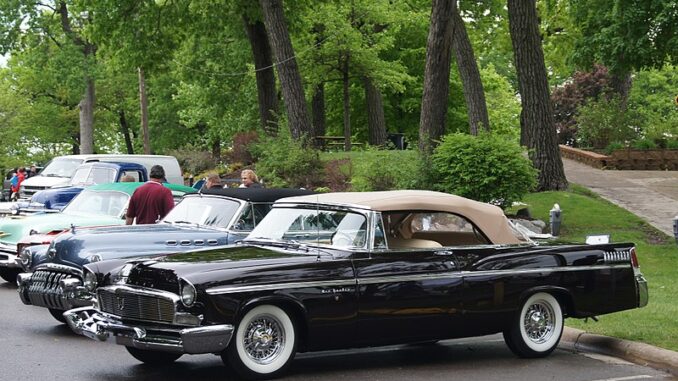
It’s April Fools’ Day! In honor of that, I’m doing… nothing. At least not yet. I’m strongly considering something for the weekend. Until then, here’s a regular Owl… which, as is often the case for me, means a look at something quite irregular.
People enjoy music. People enjoy cars. Naturally, car manufacturers quickly moved to incorporate radios into their vehicles as the technology became available. But what about music fans who wanted a little more control over their playlist?
Today there musician-specific satellite channels and podcasts. Before that, Mp3 players were designed to synch with car stereos. CDs preceded those, and as you step backward in time there were cassette tapes, and 8-track tapes. Those are all remembered, with varying degrees of fondness (the meaty “thunk” of an 8-track change or spinning a pencil through the spokes of a cassette to reseat a partially-“eaten” tape aren’t always pleasant memories.) There was a predecessor, though, and it debuted in 1956 Chryslers: Highway Hi-fi.
The name was more alliterative than descriptive.
Highway Hi-fi was a record player, equipped with shock absorbers. It was mounted below the instrument panel, between the front passengers, and attempted to minimize skipping not simply through use of springs and padding but by increasing the pressure on the tone arm. Meanwhile, the manufacturer dealt with the problem of limited times by slowing the turntable speed; the records only spun at 16 2/3 rpm. To compensate for the slower rotation, a tighter, more intricately detailed groove was impressed upon the records.
This meant the records had to be specially manufactured. There were other players which used 16 2/3 speed, and records existed for them, but they were almost exclusively used for voice recordings (such as advertisements or audio plays at radio stations) and commercial background music (where people weren’t expecting high-quality reproductions.) These records could be swapped out for the ones which were purchased through Chrysler, but with limited availability and virtually nonexistent sound quality, few bothered. Audiophiles who had purchased the system had already learned that “Hi-fi” was a misnomer and that the music quality was a bit lower than what one might expect from standard records. There was little appeal to further downgrading.
The additional pressure from the tone arm mixed with vibrations from the car tended to damage the grooves on the record, requiring the owner to re-purchase any of the proprietary music which had become unlistenable. That rarely happened, though, because the system itself broke down so often that few records could be played often enough to wreck them. While it worked well on the smooth roads of a test course, anything from potholes to dirt roads tended to sideline the machines. By 1958, due to the high replacement costs of systems under warranty, Chrysler stopped selling the device.
RCA tried a similar vehicular record player a few years later; in 1960, they introduced a design which played standard 45 RPM records. That was phased out within a year, due to even more regular failure of the player and the way most standard 45s, not designed to withstand the higher tone arm pressure for any length of time, would only survive a few plays before being rendered useless. Their version was gone within a year.
Question of the night: What are some favorite songs or albums you’ve owned on vinyl?
